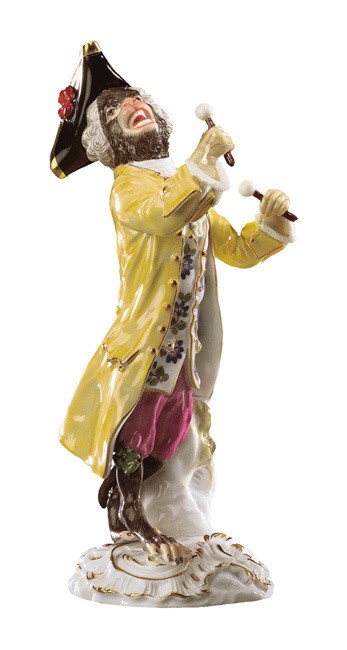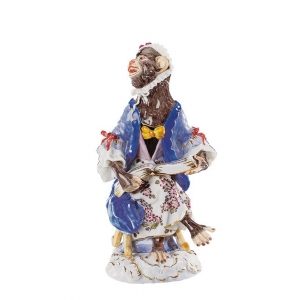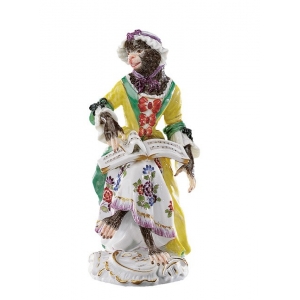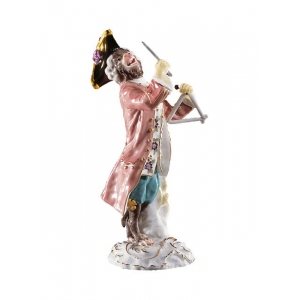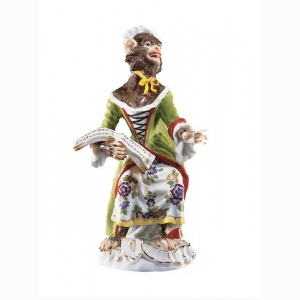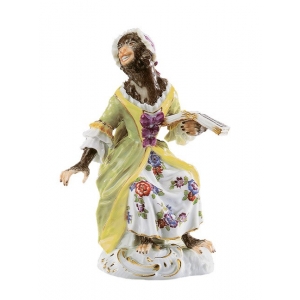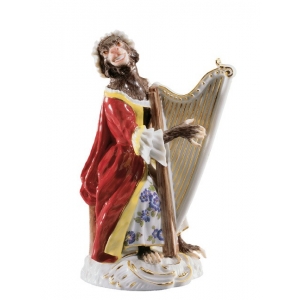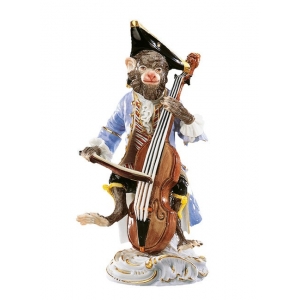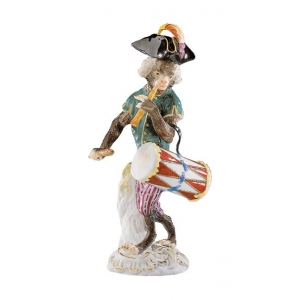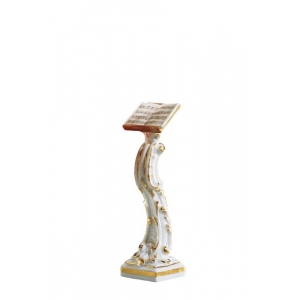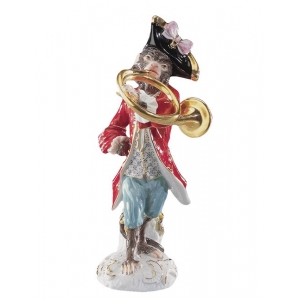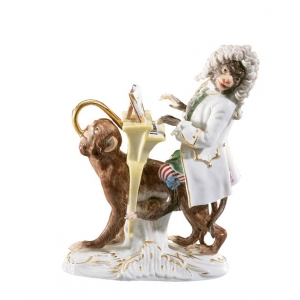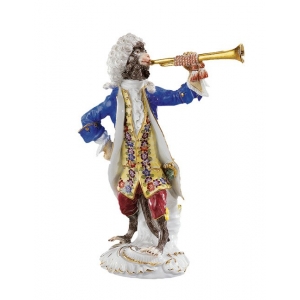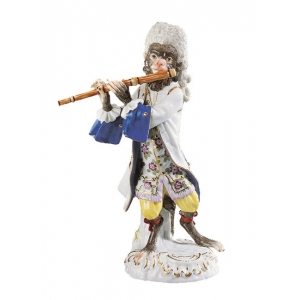- Home
- Articles
- Описания коллекций и фигурок Meissen
- Monkey Orchestra
Monkey Orchestra
Creation Year: 1750s
Sculptors: Johann Joachim Kaendler and Peter Reinecke
Number of figurines: 22 (21 monkeys + music stand)
Height of the figurines: 12 to 15 cm
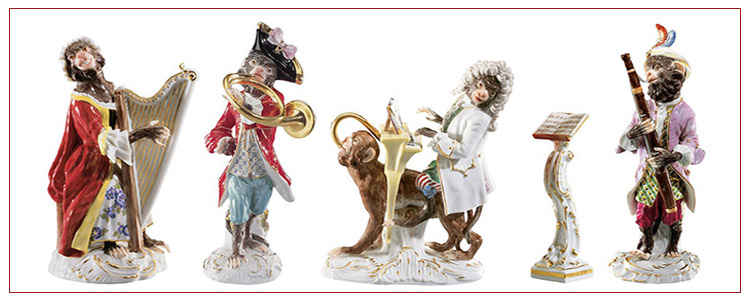
The monkey is the symbol of sin, instincts, impulses, disbelief, shamelessness, lust, obscenity, vanity and frivolity.
There are two main versions about the creation of this collection some 300 years ago.
According to one of them, Johan Joachim Kaendler was once invited to an official banquet of the Elector of Saxony and Polish King August (the Strong). At this dinner, the musicians of Count Bruhl wanted to create a warm athmosphere to the guests but played completely out of tune. The "Monkey Orchestra" was thus created as some kind of embodiement of the caricature of the 18th century court life and a satire of the human vices of certain simple-minded people at the Court. At that time, it was already said that the monkey is the symbol of an empty man, as he will never be a human even if he is put in human clothes.
The second version says that for his Monkey Orchestra, Johann Joachim Kaendler used the story of a trainer, who after great difficulty was able to present a band of monkeys to the audience. These monkeys were behaved like humans, played musical instruments, and were dressed up in beautiful coats and clothes that were fashionable at that time. However, this deception was uncovered and the 'artists' showed who they really were. This story was written by the famous Saxon satirist Gottlieb Wilhelm Rabener (1713-1771) in the year 1745.
Still, there is no certainty about where Kaendler in reality took the inspiration for his first group of monkey musicians in 1753. It is furthermore interesting that a number of European artist in the 18th century depicted monkeys in a human form. For example, the copper gravures of the famous Jean-Baptiste Antoine Guelard (1719-1755) are very characteristic for this phenomenon.

Similarly interesting are the paintings of Christophe Huet (1700-1759). He made these paintings in Chinese style on the walls and ceilings of the boudoir in an estate in Chantilly (50 km from Paris) in 1737.

The owners of the castle - the Montmonrency family and the princes of Conde - were the patrons of different types of artists for several generations and acquired their works for their collections.

Also in the Meissen archives, one can come across many such monkey gravures and paintings by famous artists and it is not excluded that they were used as a model for the figurines of Kaendler and Reinecke.
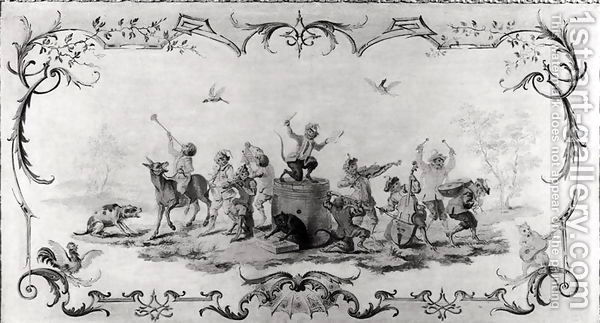
Originally, the collection consisted of 19 figurines. The male figures are musicians and the female ones singers. One of the first owners of this funny collection was Marquise Pompadour, the mistress of Louis XV, who bought them in 1753. Later, it was also acquired by Ekaterine II the Great and Karl Faberge. Later in 1765, Peter Reinecke added two more figures to the Monkey Orchestra. Finally, in 2006, at the occasion of the 300th birthday of Johann Joachim Kaendler, a 22nd figure "Tambour de Basque" was produced in a limited quantity of 300 pieces. This last one was created on the bases of Jean-Baptiste Guelard's copper gravure.
The Monkey Orchestra has been a unique collection among collectors and porcelain experts for the past 300 years in the history of the Meissen manufacture.
Written by Svetlana Ponomareva – Consultant at Art-Salon in Karlovy Vary
Used sources: materials provided by the producers, internet-sites meissen.com, lladro.com, robbeberking.com,
antique forums, academic and scientific literature on topics related to the production process of porcelain and silverware and their producers
in Russian, English and German

